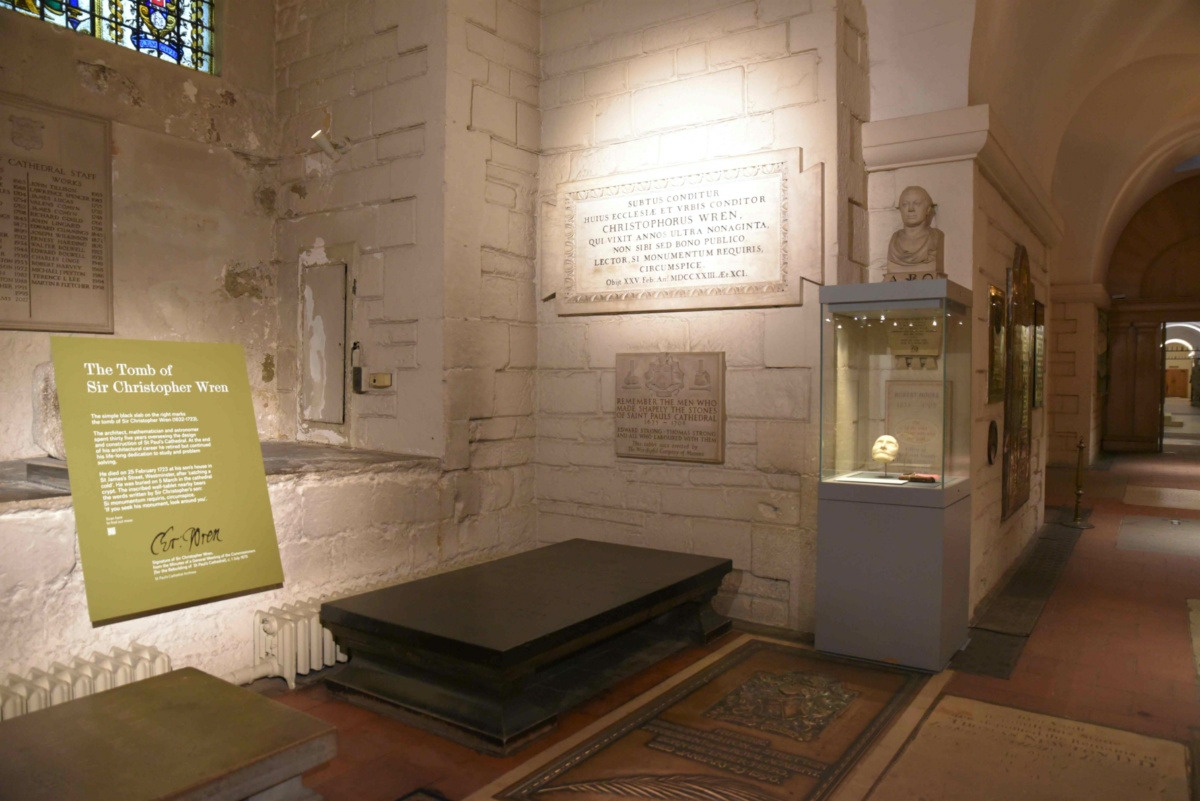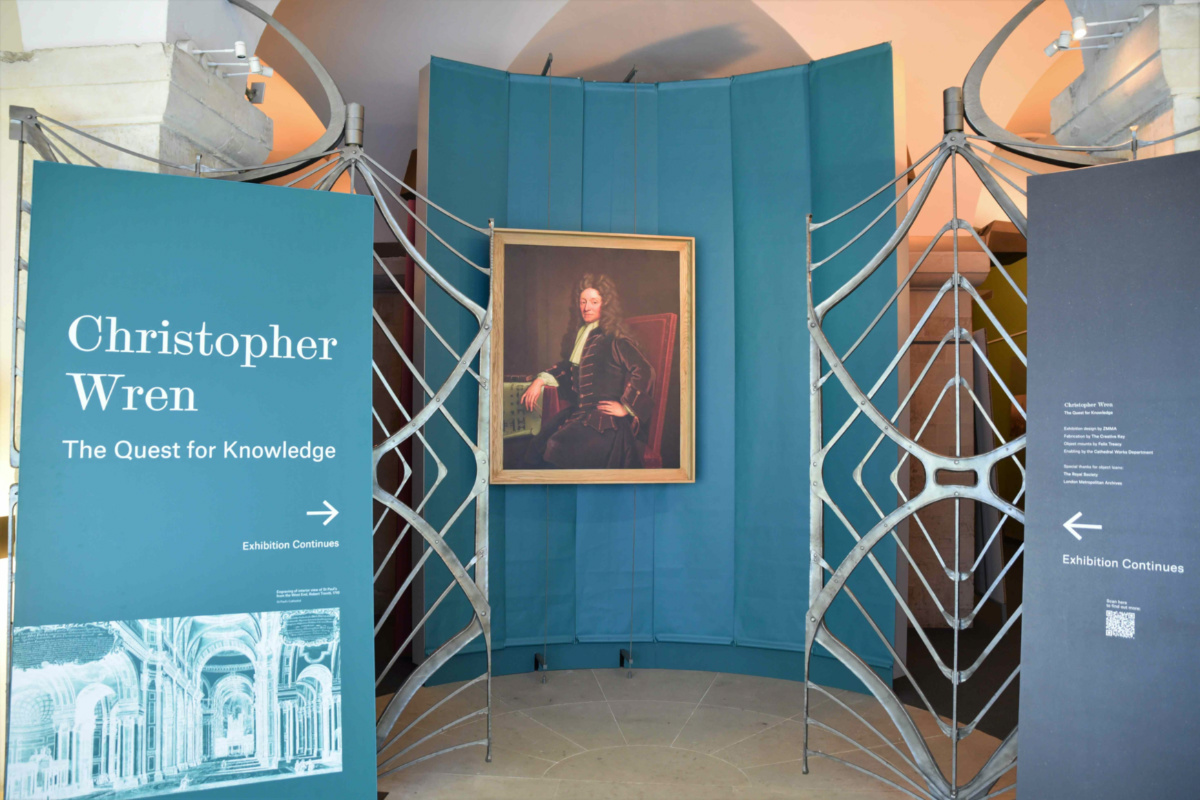Norwich, UK
“If you seek his memorial, look about you” is the simple statement on Sir Christopher Wren’s gravestone in St Paul’s Cathedral. This iconic, stunning cathedral has become a symbol not just of Wren’s work, but of steadfast faith and of London itself.
Wren died 300 years ago, and a new exhibition located within his greatest achievement seeks to bear witness to his life and work. It reveals a man who was more than anyone might imagine. Sometimes referred to as the “British Leonardo”, Wren was a polymath, excelling in numerous disciplines including astronomy, physiology, meteorology and drawing.

The tomb of Sir Christopher Wren in St Paul’s Cathedral, London. PICTURE: Courtesy of St Paul’s Cathedral
Born the son of a Wiltshire rector, Christopher Wren was only 17 when he joined Oxford University. By 25-years-old, he was professor of astronomy at Gresham College, in the City of London, before returning to Oxford as the Savilian Professor of Astronomy in 1661.
His achievements had already made him famous. Wren had contributed to the near-discovery of oxygen, the intravenous anaesthetic, the first human transfusion of blood and the first successful cardiac resuscitation. As an astronomer, he had identified the rings of Saturn, tracked comets and developed a double telescope to allow precise measurements of the stars.
Asked to create a new building for Oxford University ceremonies, he designed the Sheldonian Theatre. As a result, Wren gained an interest in architecture, which he promptly developed by heading for France to meet astronomers and study buildings. Returning to London early in 1666, his help was sought in repairing the medieval cathedral of St Paul’s. The Great Fire of London caused a change of plan.
Within a week, Wren had devised a new city layout replacing medieval streets with a radial design. This never came to pass, but Wren was asked to design a new cathedral. It took years of negotiations before the dean and chapter could agree to a design and, although the King approved it, he privately ordered Wren to make as many ornamental variations as he felt necessary. The result was the cathedral we know and love today.
His stylistic impact was not limited to St Pauls. Wren and his team were responsible for building 51 churches in the city of London, including the stunning St Clement Danes Church.

Entrance to the exhibition, ‘Sir Christopher Wren: The Quest for Knowledge’, with his portrait in St Paul’s Cathedral, London, UK. Courtesy of St Paul’s Cathedral
The exhibition, Sir Christopher Wren: The Quest for Knowledge, highlights all these varied facets to his career as well as his contribution to the design and building of St Pauls. On display are Wren’s own tools, letters, possessions, architectural plans and drawings. These include his plan for rebuilding London, an etching showing the underside of the human brain drawn by Sir Christopher Wren, and his ceremonial staff inscribed with his title ‘Surveyor to the Fabric’.
Helping to bring the period alive, visitors are able to handle objects, try on a replica of an apprentice cap and discover the smell of the Great Fire of London.
We rely on our readers to fund Sight's work - become a financial supporter today!
For more information, head to our Subscriber's page.
The Dean of St Paul’s Cathedral, the Very Rev Andrew Tremlett said that “every day I am grateful to the man responsible for constructing this remarkable cathedral”.
“As we mark 300 years since Wren’s death, this exhibition forms part of our celebration of his extraordinary life, work and achievements.”
The Bishop of London, Dame Sarah Mullally, said a debt was owed to Wren “for the extraordinary variety and legacy of church buildings”.
“To this day, buildings like St Paul’s support communities across London as places for Christians to worship, as well as people of all faiths and none to come together.”

St Paul’s Cathedral in the City of London. PICTURE: Courtesy of St Paul’s Cathedral
On a wider basis, those involved with the associated Wren300 commemorations are holding guided tours around Wren churches, hosting international conferences on his work, concerts, and an eight hour, vocal musical ‘Wrenathon’ featuring hundreds of singers in over 10 city churches.
Inspired by Wren’s architecture, the music is designed to celebrate light and space, while responding to themes of renewal, rebuilding and regeneration – all as relevant in the post-pandemic world as it was after the Great Fire of London.






